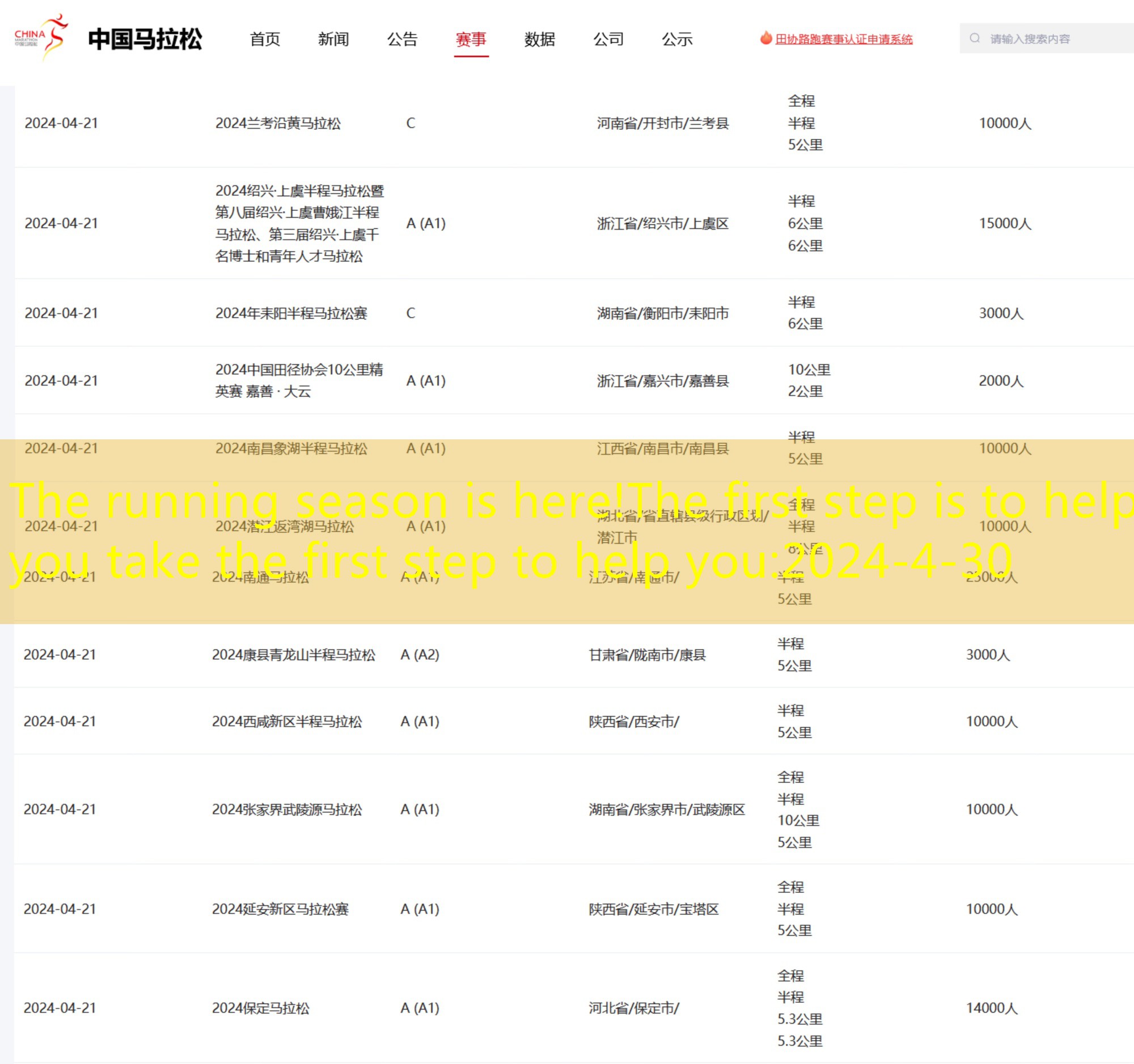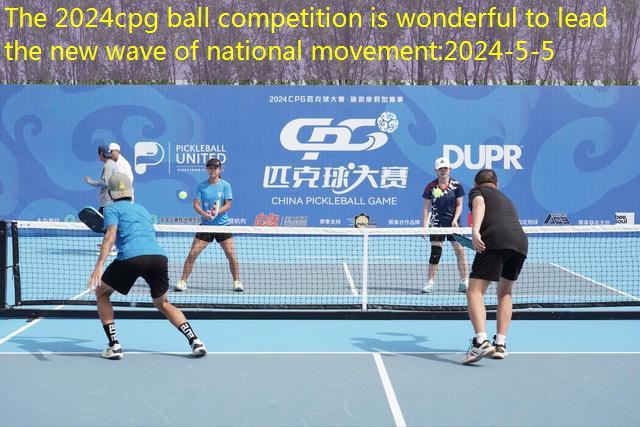The running season is here!The first step is to help you take the first step to help you

CCTV Beijing April 21 (Reporter An Yan) Every April, the spring is full of spring, the temperature is appropriate, and the outdoor sports are at the time.When going out to exercise, simple running running can not only improve physical fitness, but also help people maintain a healthy and psychological state.According to incomplete statistics, on April 21st, the country concentrated in the country such as 2024 Beijing Urban Sub -center marathon, Shanghai Half Marathon, Qingdao Marathon, Chongqing · Dragon Water Lake Marathon, including over 50 national and various marathon events across the country, Attracting more and more running enthusiasts to participate.

(Screenshots of various types of marathon events across the country on April 21, 2024, source: Source: China Marathon official website)
It should be noted that running must also master scientific skills and establish scientific cognition to avoid the emergence of exercise damage.So, before you are ready to go out and run, you may wish to learn some scientific running knowledge and take the first step correctly in order to fully protect our body while enjoying the exercise.
Full warm -up is the basis of “running without injury”
In the field of sports science, extension can be divided into: elasticity, static stretching, and dynamic extension.Studies have confirmed that warm -ups using dynamic extension can have a good effect.Feng Qiang, an associate researcher at the Institute of Physical Sciences of the State Sports General Administration, recommended a complete set of dynamic extension methods:
1. Comprehensive extension
Bow step forward, the elbow joint tries to the ground, kick the front legs, and alternate on both sides, 5 to 8 times on each side.
2. Retry back bowing
After walking back, the bow is squat and squat, keep the lower limb stability, and turn to the left and right.Both sides are alternately, 5 to 8 times on each side.
3. Side Bow
String towards the side, the side bow, and the feet cannot leave the ground.Both sides are alternately, 5 to 8 times on each side.
4. Hold your knees
Hold your knees with both hands and try your best to move closer to your chest. At the maximum, support your legs.Both sides are alternately, 5 to 8 times on each side.
5. The four -head muscle extension
Hold your feet with one hand, stretch the front side of the thigh, support your legs at the end, keep your body stable.Both sides are alternately, 5 to 8 times on each side.
6. Stretching of the calf
Step forward, the front legs are straight, the feet follow the ground, the back legs are slightly flexed, and the leg muscles are stretched downwards.Both sides are alternately, 5 to 8 times on each side.
7. Squat activation
Step towards the side, squatting down the lower half, and fully turn to the front.Both sides are alternately, 5 to 8 times on each side.
8. Hip muscles activation
Keep your body in a half squat, and keep your toes and knee joints forward and walk on the side.Note that during the walking process, the center of gravity needs to be stable and cannot rise and fall.The left and right directions are 5 to 8 meters.It can also be performed with elastic bands.
9. Back bridge activation
The lying posture, supporting one leg support, supporting the flock of muscles, hip muscles, and lower back muscles after the legs and thighs.Both sides are alternately, 5 to 8 times on each side.
10. Lie on your hip
On the lying posture, keep the bilateral shoulder joints close to the ground, and the single leg is raised to touch the opposite side.Both sides are alternate, 5 to 8 times on each side
11. Shell -type hip muscle activation
Side, keep your feet and heels close together, and make your knees.Both sides are alternately, 5 to 8 times on each side.
12. Tablet support (Core area activation)
Finally, you can use the familiar tablet support to further mobilize the function of deep muscles in the core area of the body. It can only be 10 to 15 seconds, and there is no need for strength training.
Use a scientific running posture to improve the “running economy”
The decisive factors for running economy include training, environment, physiology, physical structure, and biomechanics during running.The correct scientific running posture can improve our running efficiency, improve the results while reducing the risk of injuries.So how do we improve running economy?The official platform of the China Athletics Association Marathon gives five points of skills from the physical angle, swing arm, stabbing, pace width and landing posture:
1. Follow:When running, our body should lean forward appropriately, about 5 to 7 °.Therefore, we can activate our hip muscles more, not just rely on thigh muscles.But be careful not to lean forward, otherwise it may increase the risk of lower limb injury.

(The body should lean forward properly when running, source: Vision China)
2. Swing arm:For the upper limbs, there are several points: the arms are naturally drooping, closes the small arm, and the arms are 90 degrees bending angle; take the shoulder joint as the axis, and the arms drive the forearm to swing back and forth;Do not miss the elbow before, and do not miss your hands.The cross point of the two hands in front is a punch.Do not have friction with the body when swinging.
The swing arm is to help maintain a balance, help move forward, and reduce the body rotation.Remember not to swing horizontally or crossing. Waste your physical strength without saying, but also cause additional pressure on bones, muscles, tendons, and other parts that need to be reduced.
3. Pour:The stride is one of the most recorded actions in the running posture.Studies have shown that excessive steaming may increase the risk of injury and slow down the speed.With the decrease of the stride, the possibility of stress fracture decreases by 3%to 6%.When we run with a larger stride, the knee when landing will be in a more straight place to slow down.And if the stride is appropriately reduced, the position of the landing position is closer to the center of gravity of the body, and the angle of knee becomes larger, which will help us improve the speed.
4. Step Width:Bukou width (that is, the distance between your feet between your feet) may be a problem that everyone usually does not pay attention to. It is also a rarely mentioned and controversial as a scientific research community.It is generally believed that narrow steps (closer feet distance) will be more running economy.However, some people have proposed that this requires better feet and pelvic control.Although the width width looks more stable, it often leads the runner’s speed and looks bulky.Therefore, everyone still has to adjust according to their own situation.
5. Landing posture:It is recommended that when you land on the ground, you should first contact the ground in the middle of the foot, and then transition to the big toe.Some evidence shows that the increase in steps by 10%will enable runners to use the land to land in the middle of the foot. At the same time, appropriately reducing the stride can increase the pace and reduce the time of contact with the ground, so that the forefoot or middle landing mode is compared with the back of the tribe and the tribe ground floor.More economical.
By landing in the middle of the feet, we can better reduce brake power and transition faster to explosive promotion.Just like athletes do enhanced training similar to jumping boxes, focusing in the foot can make their feet be at the best explosive position.




